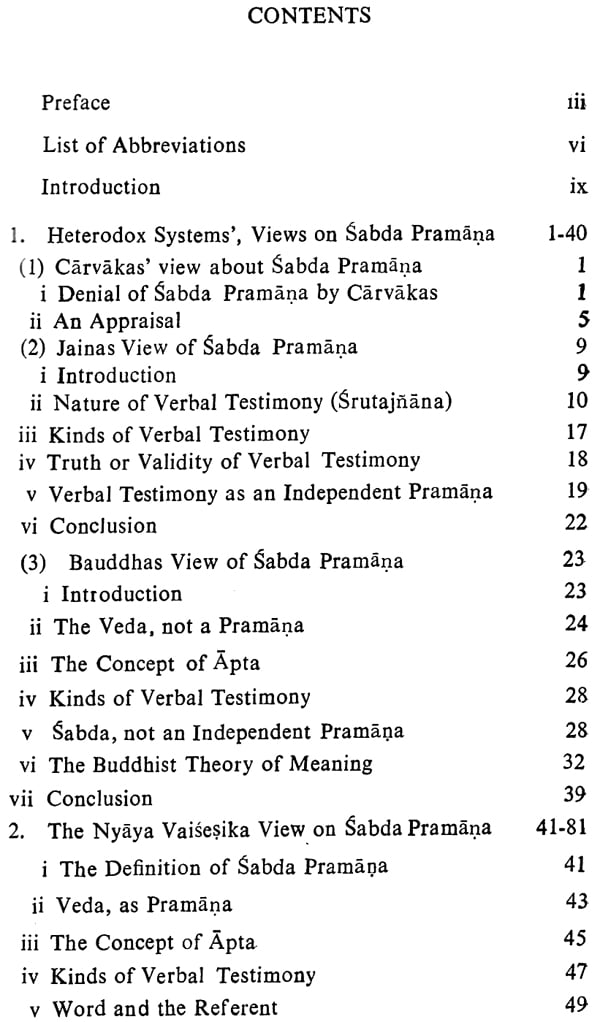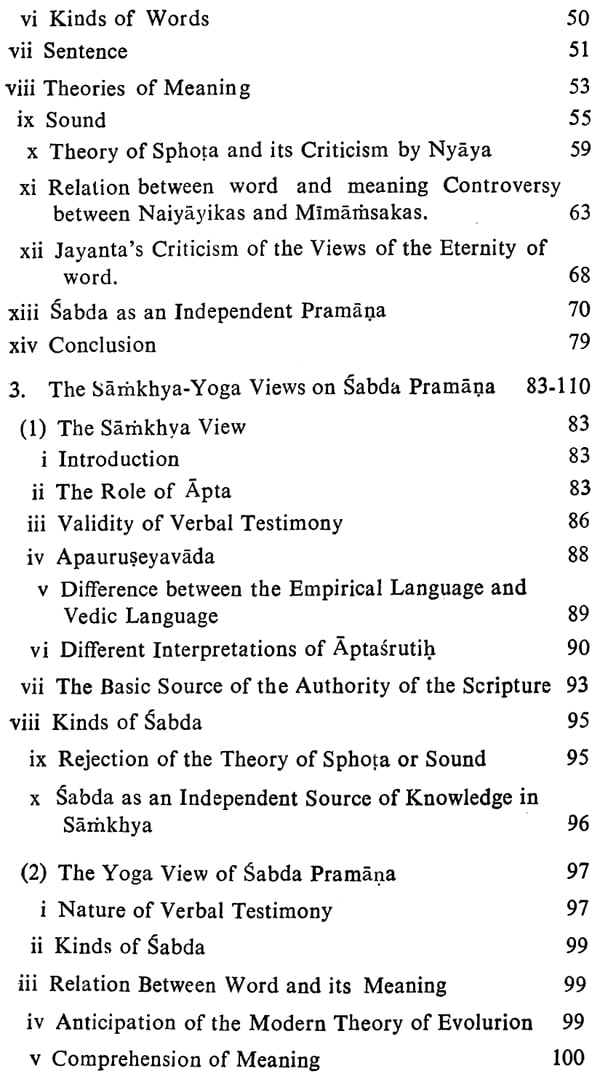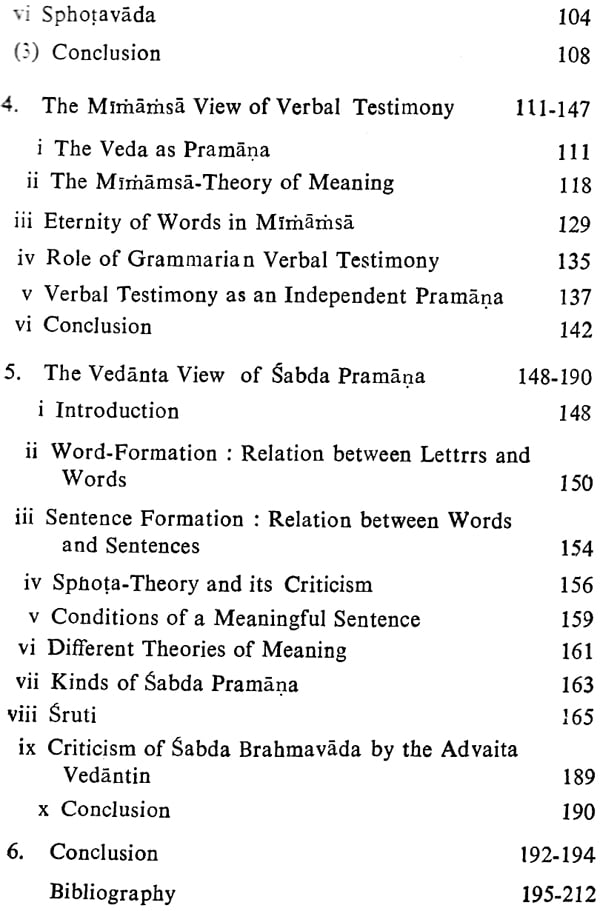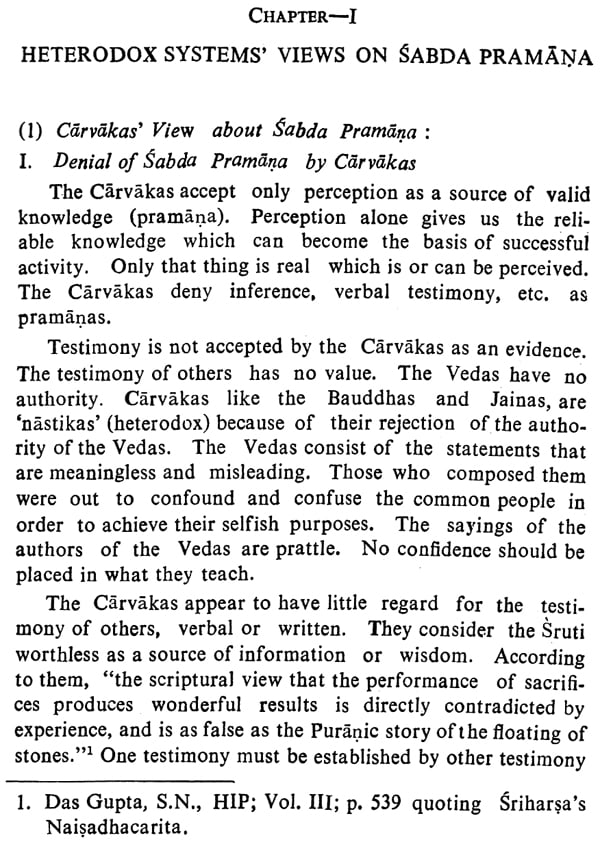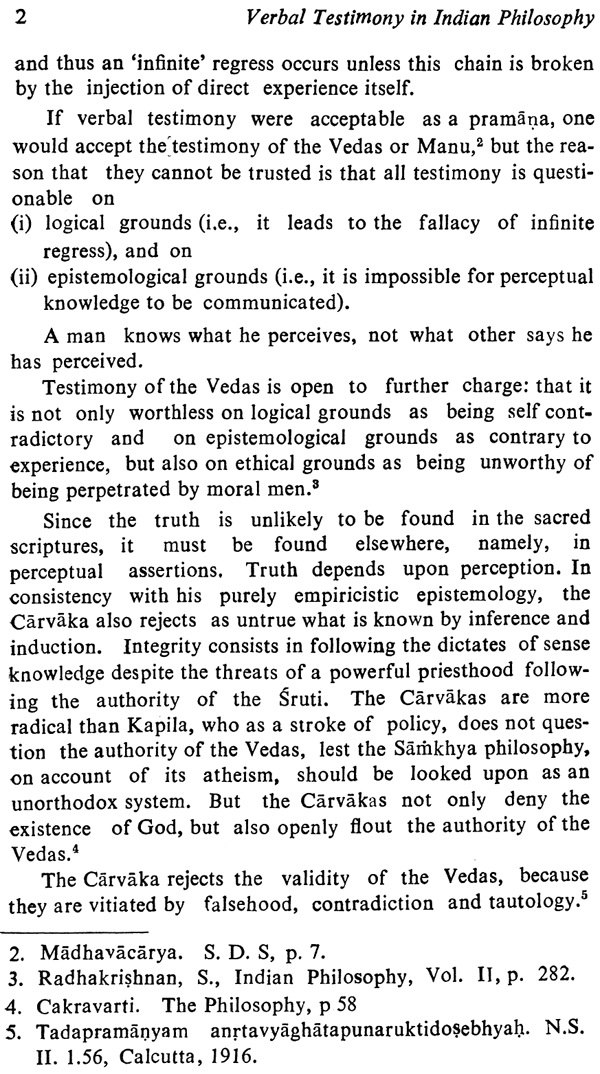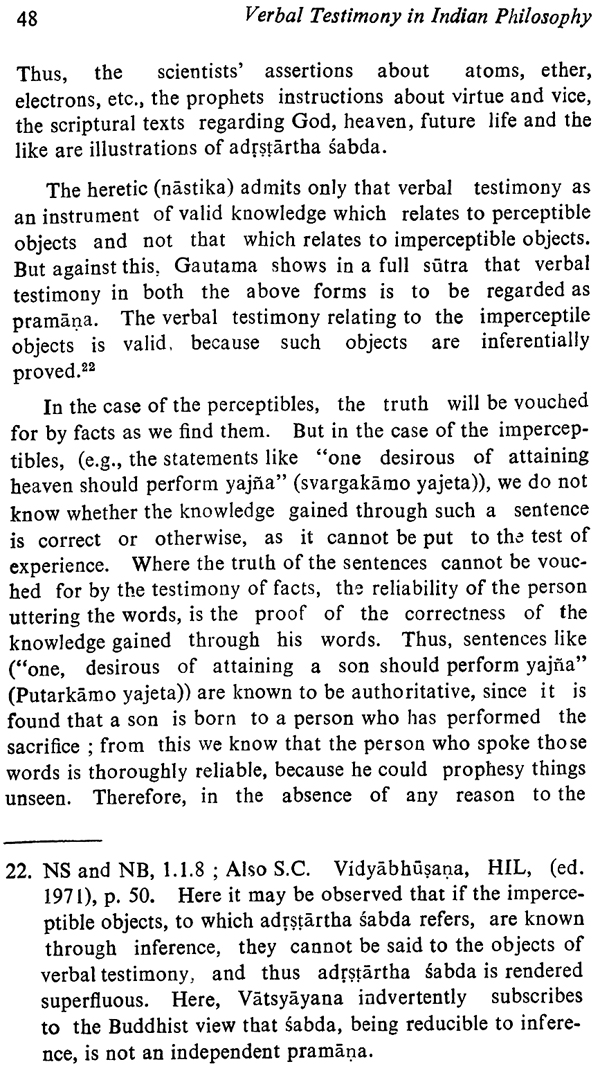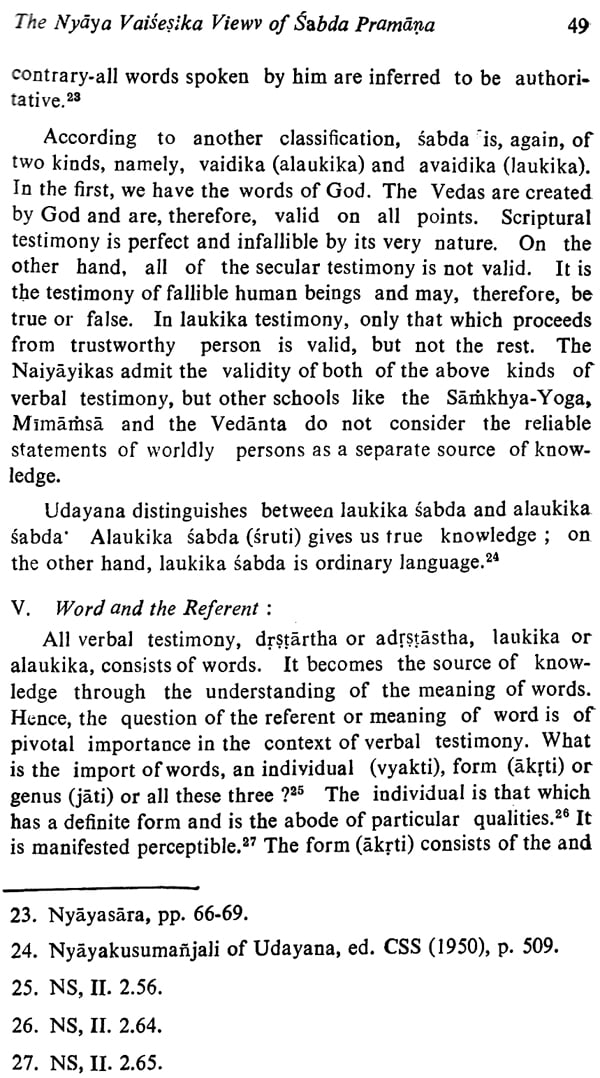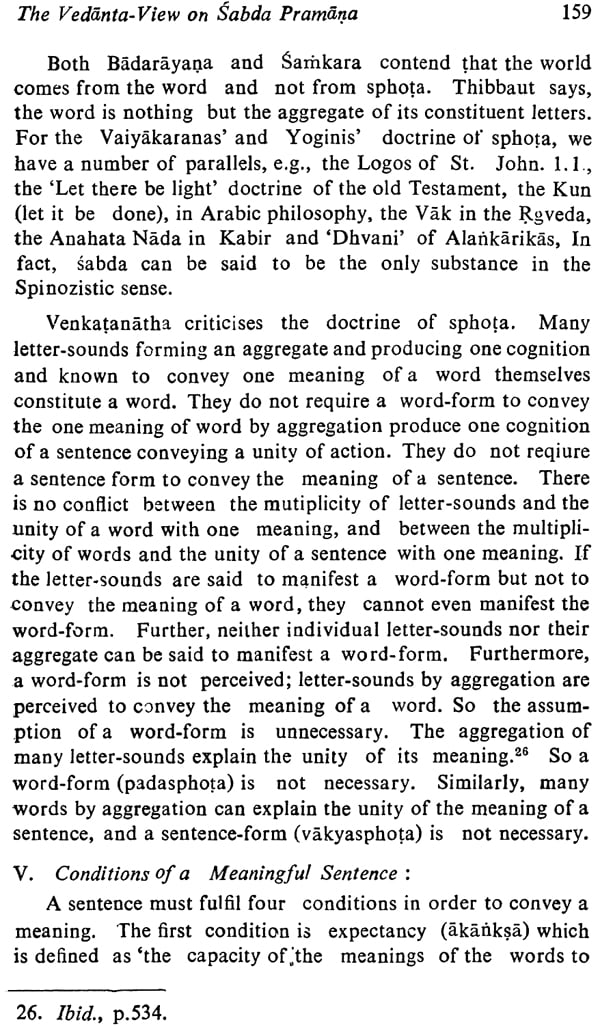
Verbal Testimony in Indian Philosophy
Book Specification
| Item Code: | NAV235 |
| Author: | Dr. Jai Singh |
| Publisher: | Parimal Publication Pvt. Ltd. |
| Language: | English |
| Edition: | 2020 |
| ISBN: | 9788171100934 |
| Pages: | 208 |
| Cover: | HARDCOVER |
| Other Details | 9.00 X 6.00 inch |
| Weight | 390 gm |
Book Description
Acceptance of Sabda as a source of valid knowledge is one of the salient features of Indian Philosophy. Sabda Pramdna occupies a significant place among the Pramdnas recognised by Indian philosophers. The aim of this book has throughout been to bring out the important place of Sabda Pramdna in Indian Philosophy. Firstly, it brings out the important contribution of language to the origination of knowledge. Secondly, Indian philosophers make a thorough- going analysis of the different problems of languages and this gives rise to a well founded philosophy of language in India. Lastly, verbal testimony has played a significant role in the development of Indian thought.
I. Origin and Development of Indian Epistempology:
The Indian thinkers have been interested in the study of of the phenomenon of knowledge since the very beginning of Indian thought. The story of Indian logic and epistemology covers a period of over 3000 years. From the time of the Mahabharata to the 18th century A.D., many theories regarding the problem of knowledge were expounded by different Indian philosophers, the Bauddhas, the Jainas and Hindus.
The Nyaya-school can, in a way, be said to be the founder of Indian epistemology. Most of the other Indian theories of knowledge are in some or the other way influenced by the Nyaya-logic and epistemology. Acharya Jwala Prasad rightly observes, ‘"‘One outstanding fact that can hardly be denied is that all the works of the sutra period and those subsequent to them, bear the stamp of being influenced by the logic of the Nyaya and the Vaisesika schools, if not exactly of the Nyaya and Vaisesika sitras.’"
II. Various Sanskrit Terms for ‘Logic’ and ‘Epistemology:
Logic and epistemology have never been separated from each other in Indian Philosophy, as they have been in the Western Philosophy. The Sanskrit equivalents for ‘logic’ {inclusive of epistemology) are anviksiki, nyayavistara, nyaya- darsana, hetuvidya, hetugastra. vada-vidya, tarkasastra and pramana-sastra. Indian logic is anviksiki, nyayavistara or nyaya-darsana in the sense that it is a philosophical system, which makes a deep investigation into the nature and kinds. of human knowledge. It is primarily the science of ratiocination or tarkasastra or the science of reasoning.
Anviksiki is the oldest name, used for epistemology and logic in Indian philosophy. This word can be traced in the Chandogya Upanisad (VIII. 1.2), Brhadadranyaka Upanisad (II. 4.5) Ramayana (Ayodhyakanda 100. 39), Mahabharata (Santiparva 180, 47-+1) Manu Smrti (VII. 4.3), Kautilya’s Arthasastra (1.2.7), Gautama’s Dharmasdstra (II. 3), etc. Anviksiki is the logic which consists in investigates by means of rationalistic methods. It is the science of inquiry. It treats of two subjects, viz., the theory of soul (atmavidya) and the theory of reason. Anviksiki, by virtue of being the theory of reason, is called Hetusastra, i.e., the science of reasoning (Manu Samhita II. 11; the Mahabharata Santiparva, Verse 6). Logic is also called Tarkavidya (the art of debate) or Vada- vidya (the art of discussion).
"‘Nyaya’, another term used in Indian thought for logic and Epistemology, literally means methodological study. It is described as the science of methods and conditions of valid thought and true knowledge of objects. Ina restricted sense ‘Nyaya’ is taken to mean the syllogistic type of inference consisting of five propositions called the members or constituents. In general, it is science of analysis of and reflection on objects. Nydaya is also a system of the Indian philosophy.
The old Nyaya system deals with philosophical logic, while the Navya Nydya system treats of the formal and dialectical logic (9th century).
III. Distinction between Indian and Western Epistemology :
The Indian epistemology is more synthetic and comprehensive in its study of human knowledge than the western epistemology. In the Western epistemology, there is a heated controversy regarding the originating source of human knowledge. According to some (viz., the rationalists), it is reason ; according to others (viz., the empiricists), it is experience. Thus, most of the Western philosophers (excepting) a few like Kant who try to strike a balance between reason and which makes a deep investigation into the nature and kinds. of human knowledge. It is primarily the science of ratiocination or tarkasastra or the science of reasoning.
Anviksiki is the oldest name, used for epistemology and logic in Indian philosophy. This word can be traced in the Chandogya Upanisad (VIII. 1.2), Brhadadranyaka Upanisad (II. 4.5) Ramayana (Ayodhyakanda 100. 39), Mahabharata (Santiparva 180, 47-+1) Manu Smrti (VII. 4.3), Kautilya’s Arthasastra (1.2.7), Gautama’s Dharmasdstra (II. 3), etc. Anviksiki is the logic which consists in investigates by means of rationalistic methods. It is the science of inquiry. It treats of two subjects, viz., the theory of soul (atmavidya) and the theory of reason. Anviksiki, by virtue of being the theory of reason, is called Hetusastra, i.e., the science of reasoning (Manu Samhita II. 11; the Mahabharata Santiparva, Verse 6). Logic is also called Tarkavidya (the art of debate) or Vada- vidya (the art of discussion).
"‘Nyaya’, another term used in Indian thought for logic and Epistemology, literally means methodological study. It is described as the science of methods and conditions of valid thought and true knowledge of objects. Ina restricted sense ‘Nyaya’ is taken to mean the syllogistic type of inference consisting of five propositions called the members or constituents. In general, it is science of analysis of and reflection on objects. Nyaya is also a system of the Indian philosophy. The old Nyaya system deals with philosophical logic, while the Navya Nyaya system treats of the formal and dialectical logic (9th century).
**Contents and Sample Pages**
